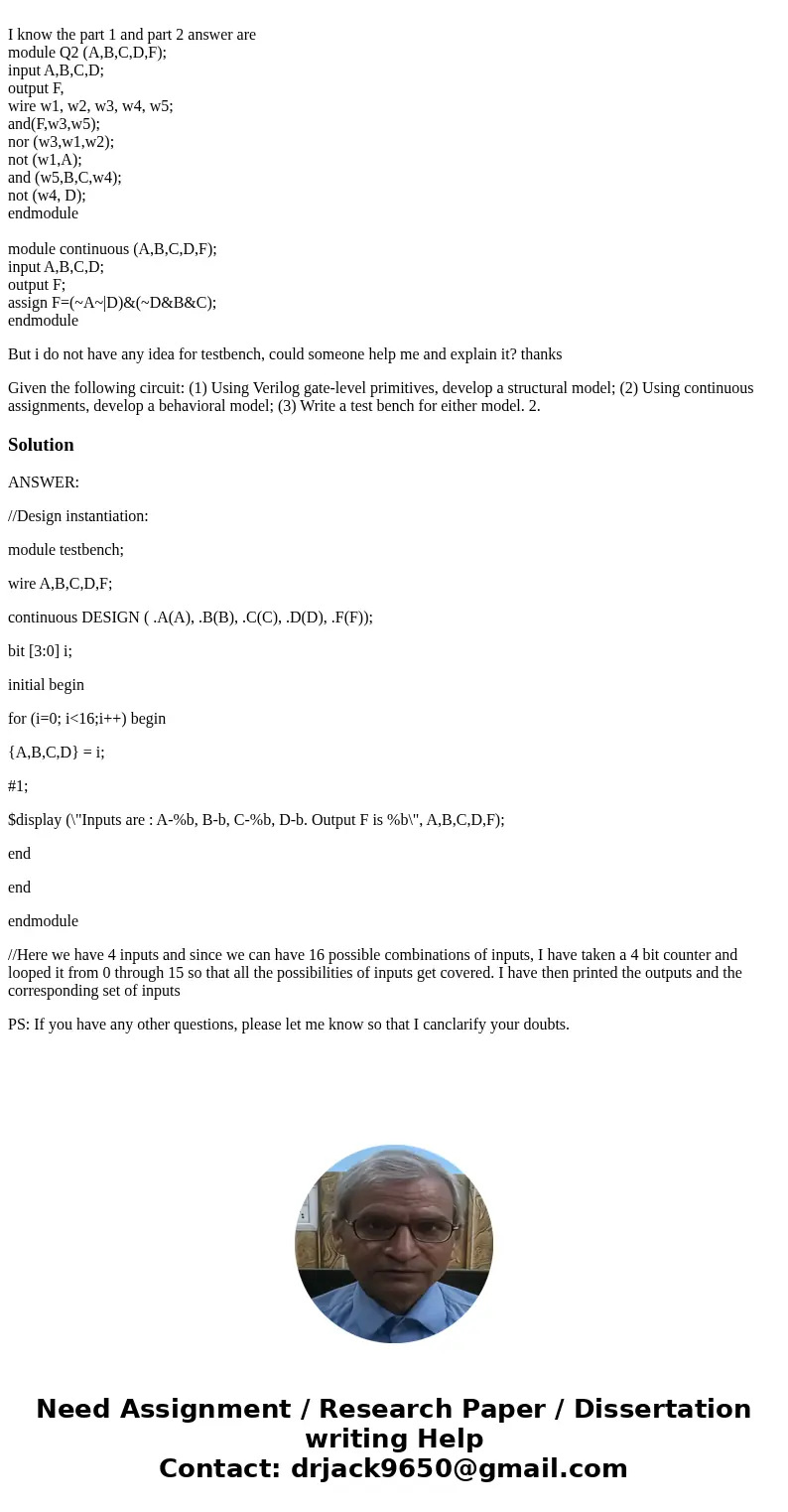I know the part 1 and part 2 answer are module Q2 ABCDF inpu
I know the part 1 and part 2 answer are
module Q2 (A,B,C,D,F);
input A,B,C,D;
output F,
wire w1, w2, w3, w4, w5;
and(F,w3,w5);
nor (w3,w1,w2);
not (w1,A);
and (w5,B,C,w4);
not (w4, D);
endmodule
module continuous (A,B,C,D,F);
input A,B,C,D;
output F;
assign F=(~A~|D)&(~D&B&C);
endmodule
But i do not have any idea for testbench, could someone help me and explain it? thanks
Solution
ANSWER:
//Design instantiation:
module testbench;
wire A,B,C,D,F;
continuous DESIGN ( .A(A), .B(B), .C(C), .D(D), .F(F));
bit [3:0] i;
initial begin
for (i=0; i<16;i++) begin
{A,B,C,D} = i;
#1;
$display (\"Inputs are : A-%b, B-b, C-%b, D-b. Output F is %b\", A,B,C,D,F);
end
end
endmodule
//Here we have 4 inputs and since we can have 16 possible combinations of inputs, I have taken a 4 bit counter and looped it from 0 through 15 so that all the possibilities of inputs get covered. I have then printed the outputs and the corresponding set of inputs
PS: If you have any other questions, please let me know so that I canclarify your doubts.

 Homework Sourse
Homework Sourse